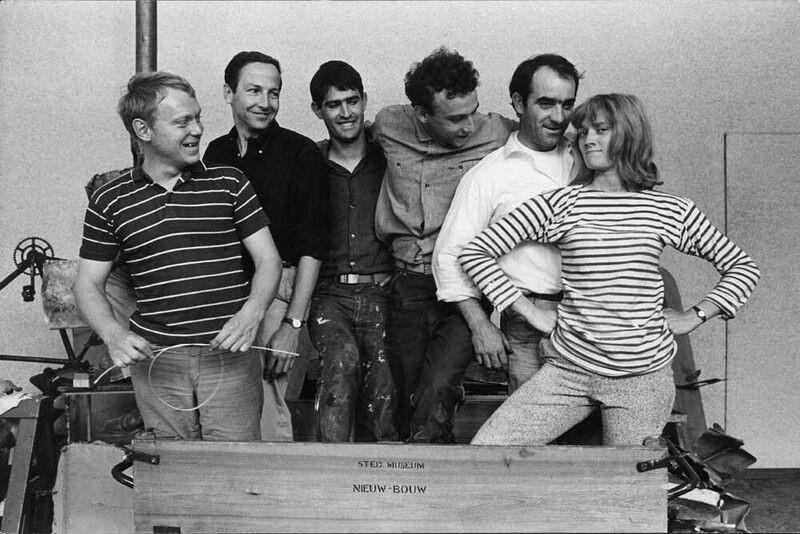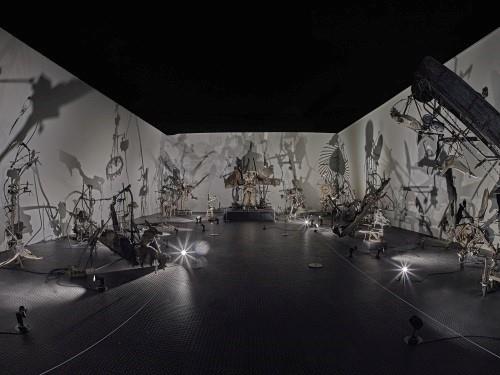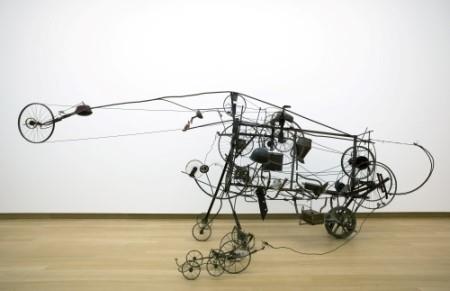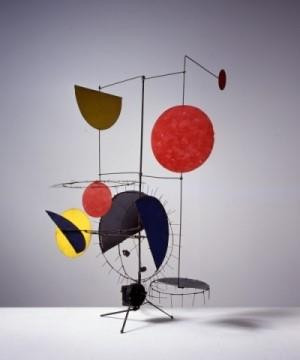Press preview: Jean Tinguely – Machine Spectacle
News — Sep 8, 2016
Amsterdam, 8 September 2016 - Swiss artist Jean Tinguely (1925–1991) is famous for his playful, boldly kinetic machines and explosive performances. Everything had to be different, everything had to move. Precisely twenty-five years after his death the Stedelijk opens the largest-ever exhibition of the artist to be mounted in a Dutch museum. With over a hundred machine sculptures, most of which are in working order, paired with films, photos, drawings, and archive materials, the presentation takes the public on a chronological and thematic journey of Tinguely’s artistic development and ideas, from his love of absurd play to his fascination for destruction and ephemerality.
The presentation features his early wire sculptures and reliefs, in which Tinguely imitated and animated the abstract paintings of artists such as Malevich, Miró, and Klee; the interactive drawing machines and wild dancing installations constructed from salvaged metal, waste materials, and discarded clothing; and his streamlined, military-looking black sculptures.

|
Primeur in the Netherlands: Mengele-Totentanz |
|
Tinguely’s enourmous self-destructive installations from 1960–1970, designed to spectacularly disintegrate in a barrage of sound, are a special feature of the Stedelijk presentation. The survey ends with a dramatic grand finale, the remarkable, room-filling installation, Mengele-Totentanz (1986), a disturbing display of light and shadow never previously shown in the Netherlands. Tinguely realized the work after witnessing a devastating fire, reclaiming objects from the ashes to piece together his installation: scorched beams, agricultural machinery (made by the Mengele company), and animal skeletons. The final piece is a gigantic memento mori, yet also an invocation of the Nazi concentration camps. Its juddering movements and piercing sounds evoke a haunting, grisly mood. |

|
Play, interaction and spectacle |
|
Tinguely created his work as a rejection of the static, conventional art world; he sought to emphasize play and experiment. For him, art was not about standing in a sterile white space, distantly gazing at a silent painting. He produced kinetic sculptures to set art and art history in motion, in works that animated the boundary between art and life. With his do-it-yourself drawing machines, Tinguely critiqued the role of the artist and the elitist position of art in society. He renounced the unicity of “the artist’s hand” by encouraging visitors to produce work themselves. |

|
Relation with Amsterdam and the Stedelijk Museum |
|
Amsterdam has enjoyed a dynamic history with Tinguely. The exhibitions Bewogen Beweging (1961) and Dylaby (1962), for which Tinguely was (co)curator, particularly underline the extraordinarily close relationship that sprang up between the museum and the artist. Not only did he bring his kinetic Méta machines to the Netherlands, he also brought his international, avant-garde network, leaving an enduring impression on museumgoers who flocked to see these experimental exhibitions. Close relationships with Willem Sandberg, then director of the Stedelijk Museum, and curator Ad Petersen prompted various retrospectives and no less than thirteen acquisitions of sculptures for the collection. |
|
Catalogue |
|
A catalogue will be published to mark the exhibition. Based on years of research conducted by the Stedelijk Museum and Museum Kunstpalast, Düsseldorf, the publication contains essays by several Tinguely experts, among them Margriet Schavemaker, Barbara Til, and Beat Wismer. EXTRA PROGRAMS |
|
Performance Bewogen Bewegen |
|
Friday, 30 September, 7.30 pm |
|
Lose Yourself! – A Symposium on Labyrinthine Exhibitions as Curatorial Mode |
|
2, 3 and 4 February 2017 |
|
Note to editors: |
|
You are kindly invited to attend the press preview on Thursday, 29 September.
|
Credit
This exhibition is organised by the Stedelijk Museum Amsterdam in collaboration with Museum Kunstpalast, Düsseldorf.
This exhibition is made possible with generous support of the Turing Foundation, All Art Initiatives B.V., the Blockbusterfonds, the LUMA Foundation and additional support by the Swiss Arts Council Pro Helvetia, the Prins Bernhard Cultuurfonds, the Walter A. Bechtler Foundation, Switzerland and Museum Tinguely, Basel.



